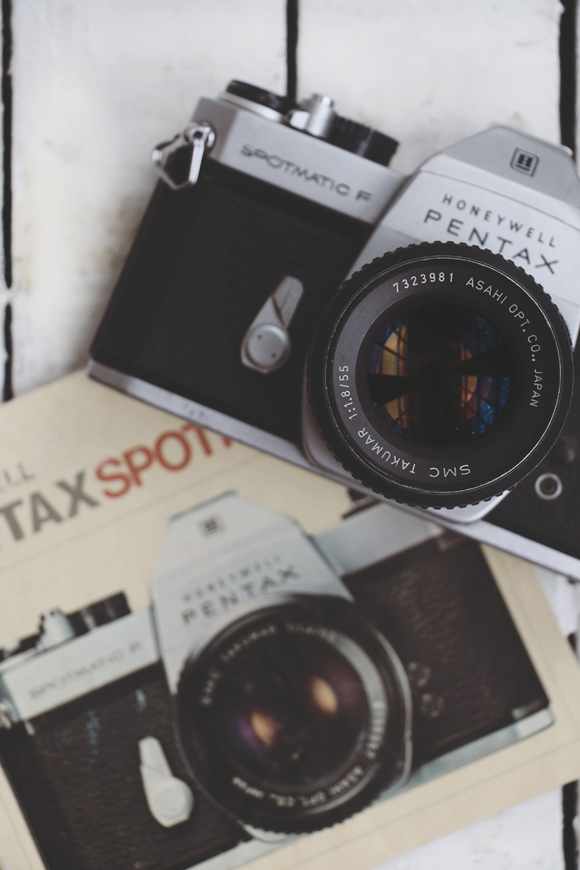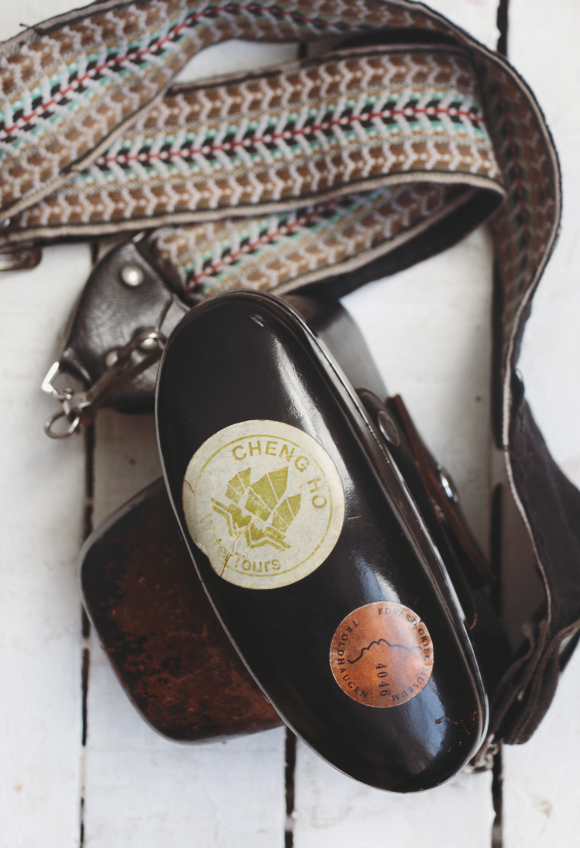4 Tips For Purchasing a Vintage Film Camera
4 Tips For Purchasing a Vintage Film Camera
Behind the lens of my mother’s old, beat-up Canon AE-1 (forever known as “the student camera”), I fell in love with photography. There was something so satisfying about the click of the shutter, winding the film, and finally, after waiting a week or an hour — depending on how much allowance I’d saved — receiving my prints. Twenty-four to thirty-six little moments, trapped forever on a 4×6 piece of paper. It was magic, and I was hooked.
These days, I mostly rely on my digital SLR (that stands for single lens reflex) to get the job done, but I welcome the slower pace that shooting with film provides. I still have that AE-1, it saw me through four years of high school photography, and two years of college classes before both myself and the world made the switch to digital, but it’s sadly filled with sand from a few too many beach tips, and sporting an impressive light leak. Along with a Minolta that drains its battery, a Rolleiflex that once belonged to my great-grandfather, and a few adorable but defunct Kodak Brownies, the AE-1 is living out its days as a very fancy paperweight.
I’d been casually hunting for a new-to-me film camera that actually works, until recently when, while digging through a drawer of cameras at a Philadelphia antique store, I unearthed something that looked promising: A Pentax Spotmatic sitting snugly in it’s original hard case. After a conversation with an employee, I left the store with a used camera and my fingers crossed, hoping for no light leaks and no sand. If you’ve been thinking about getting into film photography or searching for a new camera, today I’m sharing my tips for purchasing your own vintage film camera.
Know what you want: There are thousands of film camera models out there, and you’ll encounter most of them throughout your hunt for an SLR of your own. Do some research and narrow down your ideal camera to a few models. The Canon AE-1 became famous for how user-friendly it was, and I was looking for that same ease of use in whatever camera that would eventually land in my care. I wanted something that was simple to take care of, sturdy, and took 35mm film (the easiest film to come by these days — still available at most drugstores). Keep in mind that while medium format or wide format cameras are beautiful, the film can be expensive and difficult to get your hands on. You’ll be more likely to actually use the camera if it’s easy to buy the film.
Know where to look: While there are plenty of used cameras available online, unless your purchasing from a certified seller, your best chance of getting a camera that actually works with no issue is to buy one in person. You’ll be able to look it over — check for bent film spools which will cause light leaks, cracked or scratched lenses, dirt around the lens, loose knobs and buttons, and leaky batteries — and ask questions. To get started on your search, check out flea market sellers that specialize in used cameras and equipment, antique stores, and vintage stores in your area. Estate sales are also a fantastic place to purchase camera equipment, as you’ll usually be buying directly from the owner or a close family member who might be knowledgeable about its history.
Ask questions: Along with an overall inspection, be sure to ask plenty of questions. The obvious question is if they know whether or not it works, but also ask if the seller knows anything about who owned it last. After some searching, the store employee I spoke with when considering purchasing my Pentax was able to dig up the original manual and a customs receipt from 1975 from the previous owner. While flipping through the manual, I also found a service receipt from 1991. The fact that these documents were kept in good condition and with the camera stowed safely in its hard case told me that, most likely, the person who owned it before me took solid care of it, and wanted to keep it in working order.
Don’t be afraid to take a chance: When purchasing a used camera, there’s always a risk that it might not work in some way. Now, I’m not advising you to drop a bunch of cash on an iffy camera, but personally, as long as the price is right and the odds seem high that it will work, I’m willing to take that chance for the possible reward of a good piece of equipment. Do some research and know what you’re willing to spend, know what you’re looking for, and know what you’re ready to overlook in the name of a good camera (in my case it was the slight smell of smoke on the case).
The case may be scratched and the strap may be worn, but it kept the camera inside safe and sound during its previous life spent traveling the world, and I can only hope to have as many adventures with it as the previous owner.



